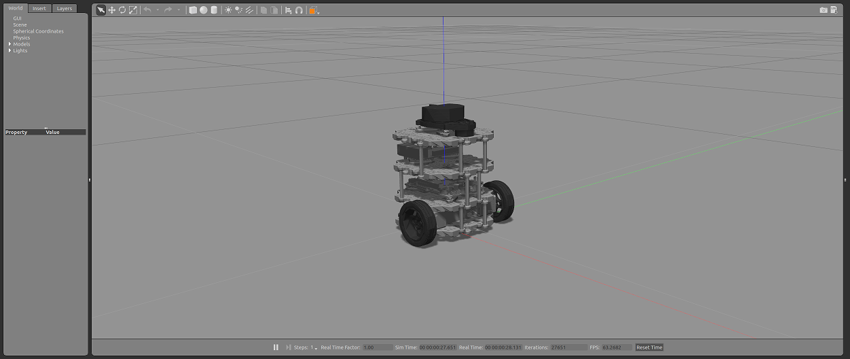Robotics Development relies heavily on Linux. We recommend using Ubuntu 20.04 or Ubuntu 18.04 since it is the most widely used and supported variant of Linux. If you already have Ubuntu 16.04, this is also OK, although for versions older than this we recommend upgrading to 18.04 or 20.04.
For those who currently have Windows as the only OS on their machine, the best way to start using Ubuntu would be to dual boot. Here is a guide on how to do this. For MacOS users, dual booting is an option but we recommend using up a virtual machine.
If you are unable to dual boot for any reason, you can try setting up a virtual machine. The first step in this is to install a virtualisation software. For Windows you can use either VirtualBox (free) or Vmware Workstation and for MacOS either VirtualBox (free), Vmware Fusion or Parallels. After getting one of the above, follow the instructions given here (skip ahead to the Download Image section). After completing the given procedure you will be equipped with all the basic tools required for Robotics including ROS, catkin and git.
In the unfortunate case that the above options do not work, for Windows users there is still a way - WSL. Do be warned however, this path is fraught with frustration and much debugging. Only continue if you have exhausted other options. For a guide on setting up WSL for ROS, look here.
Note that this part is unnecessary if you followed the given instructions to set up a VM. For everyone else, this part is essential. Different versions of Ubuntu need different variants of ROS. Instructions give below (Please follow the instructions carefully)-
➔ Ubuntu 20.04: ROS Noetic
➔ Ubuntu 18.04: ROS Melodic
➔ Ubuntu 16.04: ROS Kinetic
- Git : Fundamental tool in open source software development. Used for version control and sharing of code.
sudo apt install git
- Terminator : Terminal Emulator useful for having multiple terminals in a window.
sudo apt install terminator
- Code Editors: A good editor can go a long way in boosting productivity. We recommend VSCode which has plugins for python and ROS. A comprehensive guide for how to integrate ROS into your favourite IDE can be found here.
- catkin_tools: A better alternative for catkin_make. Follow the instructions given in the instruction page carefully.
➔ You can install already developed ROS packages using the apt (packet manager for Ubuntu). Replace <package_name> name of the ROS package
sudo apt install ros-$ROS_DISTRO-<package_name>
➔ For example in this course you will need to install Turtlebot3 and its related packages with the following command -
sudo apt install ros-$ROS_DISTRO-turtlebot3-*
Note: For Ros Noetic and above, you will have to build the Turtlebot package from source. Follow the instructions below.
- Go to your catkin workspace
cd ~/catkin_ws/src
If you have not yet set up you catkin workspace, you can do that by:
cd
mkdir -p catkin_ws/src
- Clone the relevant repositories
git clone https://github.com/ROBOTIS-GIT/turtlebot3_msgs.git
git clone https://github.com/ROBOTIS-GIT/turtlebot3.git
git clone https://github.com/ROBOTIS-GIT/turtlebot3_simulations.git
- Build your workspace
catkin build
or
cd ..
catkin_make
➔ Set the default Turtlebot model as “burger” by adding the following line at the end of your .bashrc file -
export TURTLEBOT3_MODEL=burger
➔ If you have installed turtlebot from source, you will have to source your catkin workspace(i.e.catkin_ws) everytime before running turtlebot3. You can do that by:
cd ~/catkin_ws
source devel/setup.bash
To avoid doing this everytime you can add this to your .bashrc file:
source ~/catkin_ws/devel/setup.bash
➔ Test your Turtlebot and Gazebo setup by launching a sample launch file using the following command -
roslaunch turtlebot3_gazebo turtlebot3_empty_world.launch
If you see the Turtlebot in the gazebo environment like the figure below, then you may assume that the installation is successful!
➔ Make a habit of running sudo apt update before installing packages in linux.
➔ For the uninitiated, your .bashrc file is the configuration file for your bash terminal (the thing you type commands into). It's usually located in your home directory at ~/.bashrc For more info, check out this.
➔ Don’t forget to source the workspace you want to use. For convenience you can source the workspace on startup by editing your .bashrc file to include the following line. Replace <workspace_path> with the path of your workspace.
source <workspace_path>/devel/setup.bash
➔ You cannot source two workspaces at the same time.
➔ Anaconda and ROS cannot be used in the same environment because they have a conflicting python path. As given here, to deal with this, edit your .bashrc file by commenting the anaconda python path like this -
// export PATH="/home//anaconda3/bin:$PATH"
➔ Use python pip to install python dependencies. Anaconda should be avoided.
Electronics and Robotics Club, BITS Goa
